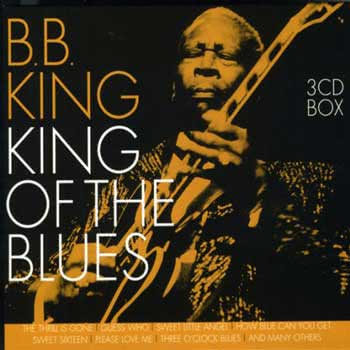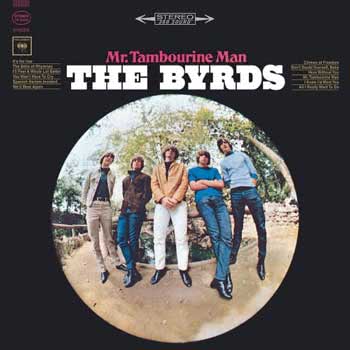The Nashville Number System
How To Manage Chord Progressions Easily
The Nashville Numbering System is a method of denoting chord letter symbols by numbers, useful when dealing with chord progressions .
In this tutorial, we're going to learn how to use both systems in a number of different situations.
So let's begin!
Nashville Number System - Introduction
With the Nashville Number System, each chord of the scale is denoted by a number, depending on its position in the scale; have a look at the table below to get an idea:
Nashville Number System for the key of C and G
| Key | 1 | 2 | 3 | 4 | 5 | 6 | 7 |
|---|---|---|---|---|---|---|---|
| C | C | Dm | Em | F | G | Am | Bm/b5 |
| G | G | Am | Bm | C | D | Em | F#m/b5 |
As you can see, the numbers are always the same, while the key can change.
If we say: a 1-4-5 song in the key of C, that's means C, F and G.
A 1-4-5 song in the key of G, is G, C and D.
Warning! The Nashville Number System is not the Roman Numbers System
On the web, there's a bit of confusion about the Nashville Number System, because some folks use Roman Numbers (I, II, III, IV, V, VI, VII) instead of 1, 2, 3, 4, 5, 6, 7.
The meaning is the same, but with some more information.
Roman Numbers is another way of describing chord progressions, and it's a little more complex than the Nashville system because it uses uppercase and lowercase Roman Numbers.
In fact, using lowercase and uppercase, the Roman Numerals System also provides information about the quality of the chords .
Keep reading this article to learn about this.
Chords Degree Roman Numbers Chart - C and G Keys
Uppercase and Lowercase numbers
Roman Numbers can be written in uppercase or lowercase: this indicates the type of chord
- The roman numbers for Major chords are written in uppercase (e.g. C, G, F)
- The roman numbers for Minor chords are written in lowercase (e.g. Am, Dm, Em)
- The roman numbers for Half-diminished chords are written in lowercase and with the ° symbol (e.g. Bm/b5)
- We can have other symbols like the 7, for example, V7 denotes a Dominant chord in the fifth degree of the scale
In this way, the Nashville Number System also shows the
types of the song chords
.
For
example, the progressions
I V vi vii°
in the key of C is composed of these chords:
C G Am Bm/Bf
Let's have a look at the chords table below.
As you can see, the first chord of the scale is denoted with the roman number I, the second with ii, the third with III, and so forth.
Pay attention to the uppercase and lowercase letters, and notice how major and minor chords are denoted. (the last chord, B, is a diminished chord).
| Key | I | ii | iii | IV | V | vi | vii° |
|---|---|---|---|---|---|---|---|
| C | C | Dm | Em | F | G | Am | Bm/b5 |
| G | G | Am | Bm | C | D | Em | F#m/b5 |
How To Use Numbers Table
Let's say we take one of the more common progressions known as the I-IV-V , or the 1-4-5
Now suppose that your bandmate says: "This song is I-IV-V"
We look at the table above, and immediately we know that:
- In the key of G the chords are G C D
- In the key of C, the chords are C F G
Easy, isn't it? What you have to do is to understand the relationship between the chord and its scale degree number.
In this way, you can denote chords with numbers and deal with progressions and chord substitution easier.
Another powerful device used to manage keys and chords (and much more) is the Circle Of Fifths , that deserves a separated tutorial.
Full Chart of keys and Roman Number System Numbers
Here below you find a complete chart showing the chords for all the keys .
This table is useful for knowing the chords in a key, and for transposing songs to another key .
As an exercise, try to find the chords for a I-IV-V song in F major key (solution at the bottom of the table).
| Key | I | ii | iii | IV | V | vi | vii° |
|---|---|---|---|---|---|---|---|
| C | C | Dm | Em | F | G | Am | Bm/b5 |
| G | G | Am | Bm | C | D | Em | F#m/b5 |
| D | D | Em | F#m | G | A | Bm | C#m/b5 |
| A | A | Bm | C#m | D | E | F#m | G#m/b5 |
| E | E | F#m | G#m | A | B | C#m | D#m/b5 |
| B | B | C#m | D#m | E | F# | G#m | A#m/b5 |
| F# | F# | G#m | A#m | B | C# | D#m | E#m/b5 |
| C# | C# | D#m | E#m | F# | G# | A#m | B#m/b5 |
| Cb | Cb | Dbm | Ebm | Fb | Gb | Abm | Bbm/b5 |
| Gb | Gb | Abm | Bbm | Cb | Db | Ebm | Fm/b5 |
| Db | Db | Ebm | Fm | Gb | Ab | Bbm | Cm/b5 |
| Ab | Ab | Bbm | Cm | Db | Eb | Fm | Gm/b5 |
| Eb | Eb | Fm | Gm | Ab | Bb | Cm | Dm/b5 |
| Bb | Bb | Cm | Dm | Eb | F | Gm | Am/b5 |
| F | F | Gm | Am | Bb | C | Dm | Em/b5 |
The chords for a I-IV-V song in F major key are: F Bb C
Chords Degrees Functions
Each scale degree has a specific function in the rules of modern Western harmony, and knowing how to combine them is the foundation of chords progression theory.
1st - Tonic
The I chord is the tonic chord , the root chord that all other chords are based off of, for now on we will use the key of C, so C will be our tonic chord.
2nd - Supertonic
The ii chord is the supertonic chord , which is one musical step above the tonic.
The reason it is lowercase ii and not II is because the supertonic is often a minor chord.
So in the key of C the ii chord is Dm.
3rd - Mediant
The mediant chord or the iii chord is also a minor and is the least used in most chord progressions.
For the key of C the iii chord is Em and is a very weak chord compared to the others in the key.
4th - Subdominant
The IV chord is an F major which is known as the subdominant , it is very commonly used in many progressions and is one note below the dominant.
5th - Dominant
The V chord is the dominant chord , in this case a G.
This chord is the second most important to the tonic or root chord of the progression, the dominant is used for tension as it often wants to resolve to the back to the tonic.
6th - Submediant
And then we have the vi chord, another minor chord and in this case Am.
This is known as the submediant chord and provides a great contrast with the tonic.
7th - Leading Tone
And finally we have the vii chord, the leading tone .
This chord is played in a variety of ways but always has the feel of needing to lead right back into the tonic, thus a leading tone.
Here is a helpful pdf reference sheet with the chords for all the major and minor keys .
Example of some popular songs denoted with the Roman Numerals System
So now that we have an understanding of chord progression basics and the Roman numbering system, let’s look at some of the more common and simple progressions out there.
We will stay in the key of C for all examples.
I V (C G in the key of C)
 One of the most basic progressions used in folk music and reggae is
I-V
, or C-G.
One of the most basic progressions used in folk music and reggae is
I-V
, or C-G.
These simple two chord songs can be very popular such as Camptown Races or Alouette and even the Beatles Yellow Submarine .
Often a 7th is added to the V or dominant chord in these songs.
I IV I V I (C F C G C in the key of C)
 Another popular progression is the
blues progression
I-IV-I-V-I
and of course 7ths can be added to make
C-F-C-G7-C.
Another popular progression is the
blues progression
I-IV-I-V-I
and of course 7ths can be added to make
C-F-C-G7-C.
There are so many variations on the blues progression and it doesn't take much skill to play around with it, early blues songs and early rock are based around blues progressions.
I bVII IV (C Bb F in the key of C)
 In
Rock n Roll
another common progression is I-bVII-IV, now that means the seventh
chord is a major and flat.
In
Rock n Roll
another common progression is I-bVII-IV, now that means the seventh
chord is a major and flat.
C-Bb-F is used by Roy Orbison in You Got It and Boston in their song More Than A Feeling , in fact variations of this progression are well known by those in rock and pop rock.
I II IV I (C D F C in the key of C)
 And finally another basic one is the
pop rock lydian progression of I-II-IV-I
, notice
that the II is not a minor (ii) in this situation.
And finally another basic one is the
pop rock lydian progression of I-II-IV-I
, notice
that the II is not a minor (ii) in this situation.
C-D-F-C was used in Eight Days A Week by the Beatles and Mr. Tambourine Man by the Byrds.
Now sometimes these chord progressions mentioned above are used for verses, choruses, and sometimes bridges.
Rarely is the same progression used throughout the entire song
However it is important to recognize these progressions.
After a while you will start to pick them out when you hear new songs, and even later still you will learn to appreciate subtle changes that songwriters make to common progressions .
That way they can create a song that will be liked, yet will still be a little different than the rest.
Remember to always pay attention to the way in which various chords sound with each other, a tonic, dominant, and so on mean nothing if they cannot work off each other.
Each time you now learn a new chord, notice how it sounds when played before or after other chords you already know.
Experiment as much as possible with chords , keys, and as many chord progressions as you can find!
The Nashville and Roman Numbers System: conclusions and useful links
Now you should have a good understanding of these systems and their use in composition, improvisation and songs transposing.
Below you find some useful resources for moving forward with the study of chord progressions:
- Chords in Keys Pdf - Free Download - This reference chart contains the chords (3 tones and 4 tones) for all the major and harmonic minor keys.
- Rockabilly chord progressions Lesson Series - This lesson shows you how to play the I IV V chord progression in Rockabilly style .
To stay updated on new tutorials, subscribe to the free newsletter (you'll also get access to the download area with lots of free printable resources)